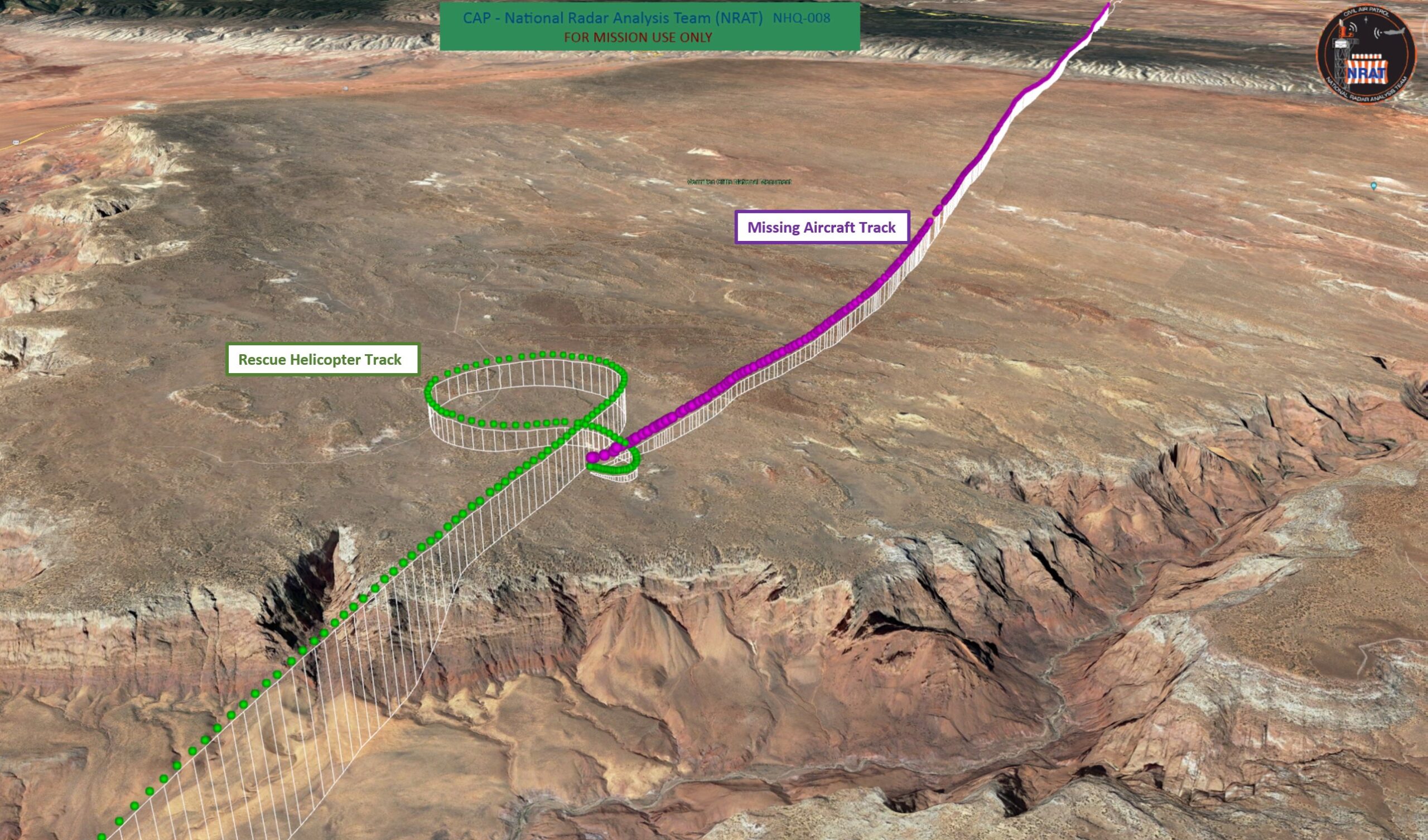Arizona emergency responders were able to quickly locate a small plane crash site in northern Arizona, thanks to the work of Civil Air Patrol’s volunteer National Radar Analysis Team, Sept. 23.

The plane, a Piper PA-28R-200 Arrow II, single-engine aircraft departed from San Martin, California with two people onboard. The plane crashed on approach to Page Municipal Airport, Page, Arizona.
After the crash, the passenger was only able to send text to family member but she did not know her location. The family member contacted authorities who contacted the Federal Aviation Administration about the crash. The FAA put out an Alert Notification, or ALNOT, to Air Force Rescue Coordination Center who then requested NRAT’s assistance in the crash site search.
The NRAT team analyzed and processed millions of raw radar targets, reduced down to hundreds for this track in seven minutes to determine the end of the aircraft’s radar track, and probable crash location. This reduced the search area from hundreds of square miles to less than a 100 feet.
“They were looking in the wrong location based on a text received from the passenger; but we [NRAT] were able to put them in the right place for the rescue,” said Lt. Col. John Henderson, CAP vice commander of NRAT and 84th Radar Evaluation Squadron member.
When emergency services arrived at the crash site, they confirmed the death of the pilot. The wife of the pilot, was flown to a hospital in St. George, Utah for treatment.
“With these types of missions, where you know that someone has survived the crash, time is of the essence. We lost the track 125 feet above the terrain in a decent, so we knew right where they had crashed,” said Henderson. “Based on our precise location, less than 100 feet from our prediction, a rescue helicopter was able to fly to the crash site an hour after dark and rescue the lone survivor. This was on top of a plateau in a very remote, desolate area.”
The NRAT is now up to 13 saves this year which sets their record for number of annual saves over the past 13 years. In 2021, the entire NRAT has volunteered more than 420 hours to support search and rescue missions.
“Five of the six NRAT team are either past or present members of the 84th RADES,” said Lt. Col. Jesse Scott, 84th RADES commander, Hill Air Force Base, Utah. “I am so proud of how our NRAT members use their radar skills not only for the 84th RADES national defense mission, but also to reduce search areas for plane crash locations enabling emergency responders to get there faster.”
The 84th RADES at Hill Air Force Base, Utah, reports to the 505th Test and Training Group, which is assigned to the 505th Command and Control Wing; both are headquartered at Hurlburt Field, Florida.

